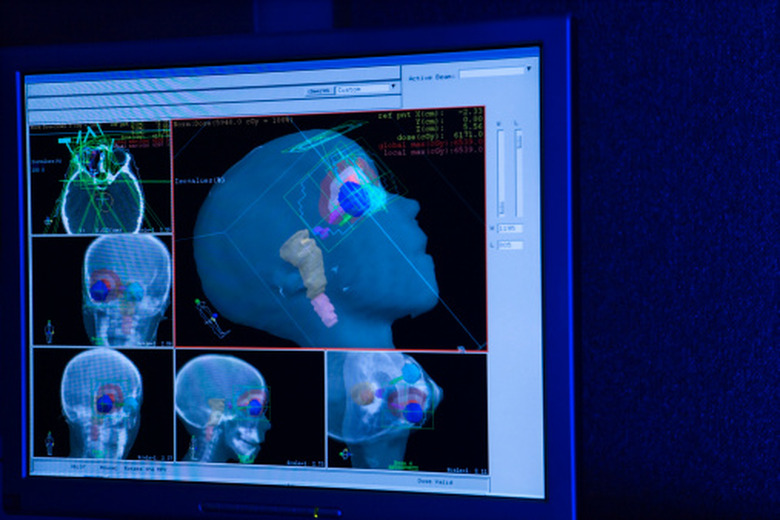Advantages Of Radioactive Tracers
A radioactive tracer is a chemical compound having at least one radioactive element. Frequently used in medicine to follow the progress of substances in living tissues, it gives doctors a precise way to "see" into the circulatory system and other organs. A technician prepares the compound, injects it into the patient and tracks it in the body with sensitive electronic detectors. In most cases, the material remains radioactive for only a few hours.
Non-Invasive
Non-Invasive
Using a radioactive tracer, a physician can examine the state of a patient's organs without performing surgery or getting a biopsy. The tracer collects in the tissues and emits gamma rays radiation. Detectors produce detailed images of the affected organs by measuring the radiation. Combining these images with those from computed tomography (CT) scans results in a detailed picture with specific areas highlighted by the tracer.
Specific
Specific
A chemist can design and synthesize radioactive compounds specifically suited for particular organs, tissues and biological processes. These compounds are radioactive versions of normal biological substances or substances known to collect in certain tissues. Chemically and biologically, the tracer acts the same as a non-radioactive compound, though it gives off detectable radiation.
Safe
Safe
A radioactive tracer is used to detect and image tissues, not affect them with radiation, so it uses only small amounts of radioactive material. As no other processes in the human body produce gamma radiation, the energy produced by the tracer stands out clearly, even in small quantities. Chemists select radioactive materials that decay in a matter of hours or days, reverting to a normal state and posing no long-term problems.
Metabolic Tracking
Metabolic Tracking
In addition to imaging a single organ with a tracer, a doctor can follow the tracer's progress as the body metabolizes it. Organs break down and combine chemical compounds with others through a long chain of biological processes. If the right atoms of the compound are radioactive, a doctor can see if the tracer stops in certain parts of the body or if it passes on to other tissues and organs.
Cite This Article
MLA
Papiewski, John. "Advantages Of Radioactive Tracers" sciencing.com, https://www.sciencing.com/advantages-radioactive-tracers-8543853/. 24 April 2017.
APA
Papiewski, John. (2017, April 24). Advantages Of Radioactive Tracers. sciencing.com. Retrieved from https://www.sciencing.com/advantages-radioactive-tracers-8543853/
Chicago
Papiewski, John. Advantages Of Radioactive Tracers last modified March 24, 2022. https://www.sciencing.com/advantages-radioactive-tracers-8543853/
